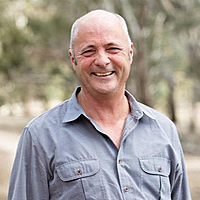BioUrbanism: Redefining Sustainable Urban Land Development
For over two decades, I have witnessed the evolution of landscape-scale ecosystem rejuvenation from a niche concept to approaching mainstream practice. Yet, as we witness ongoing and undeniable damage to our global biodiversity, it is evident that the future of urban development must be tailored to principles and solutions that proactively contribute to the health of our planet.
This is what underpins Dragonfly Enviro Capital’s sustainable urban land development investment strategy championing “BioUrbanism” – the integration of ecology, climate, and community planning in the creation of urban environments to cultivate life in harmony with nature.
Where urban developments have often prioritised convenience and maximised profits over ecological benefit, BioUrbanism is focused on creating cities that function as living ecosystems, designed to restore natural resources, boost biodiversity, and improve the quality of life for residents. BioUrbanism focused urban development has the potential to enhance financial returns and drive consistent, long-term value.
Why Dragonfly?
Dragonfly’s commitment to repairing biodiversity and addressing climate change as best-in-class investments unlocks opportunities that promote a healthier, more resilient planet, while producing attractive financial returns for our investors.
My experience in this field has been significantly influenced by working across Australia in endangered species conservation and recovery, regenerative and sustainable agriculture, First Nations empowerment, and biodiversity-sensitive urban design. Over the past decade, I’ve founded and continue to lead three environmentally focused organisations: Dragonfly Enviro Capital, Odonata Foundation and Tiverton Agriculture Impact Fund. These platforms have enabled me to collaborate with investors to secure funds aimed at enhancing biodiversity, climate resilience, and soil and food quality through innovative methods and solutions.
Over the past 20 years, my commitment to finding, delivering, and sharing cost-effective solutions to complex biodiversity, climate, and other environmental issues has been a driving force in my career. These drivers enable strategic guidance of Dragonfly to address this market opportunity, as well as advising others on applying these same principles to urban developments, which we currently provide via Dragonfly’s wholly owned bio-urban advisory and management service, Sharps Track.
Why now?
Rapid urban growth has heavily impacted natural landscapes. The United Nations estimates that by mid century, 70% of the global population, which is expected to reach 9.8 billion, will reside in urban areas and cities. This means that now is the time to up the ante with urban developments. Dragonfly aims to move the dial beyond the type of superficiality of projects that add solar panels or community gardens, into deep systemic impact brought about by strategic thinking, leveraging expertise and meticulous planning and execution, to set our world up for environmental and economic resilience.
Dragonfly is being joined by global leader in the field, Mike Day, Co-Founder of Roberts Day and Partner at HATCH Urban Solutions, who notes that “until now, there’s been a pure focus on either one of two dimensions – the natural habitat or conversely, on the built form and urban outcomes; there hasn’t been a synergistic and symbiotic approach towards the coexistence of the urban form and the natural world”. Mike is well known for his passion and expertise in biodiversity-sensitive urban planning, creating urban environments that benefit nature and build resilient communities.
Dragonfly’s BioUrbanism investment strategy focuses on achieving significant biodiversity and human outcomes, extending to investments into BioUrban developments that provide attainable housing and enhance neighbourhood-based communities. This includes neighbourhood structures that encourage greater access to and opportunities for people to take pride in the natural environment they are immersed in – “creating better places for humans while safeguarding nature” as Mike Day cited.
In closing, I want to emphasise that the journey toward a sustainable future is a collective one. As stewards of this planet, we have a responsibility to leave it better than we found it.
Dragonfly is committed to paving new pathways toward dynamic, diverse, and resilient urban environments that are harmonious with the natural ecosystems that sustain us.
If you’re interested to learn more about investing in progressive sustainable urban land developments, please speak with our Dragonfly Team.
5 topics

